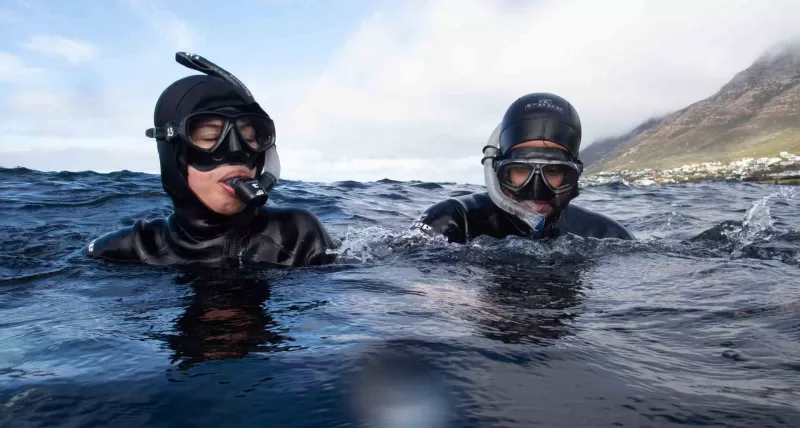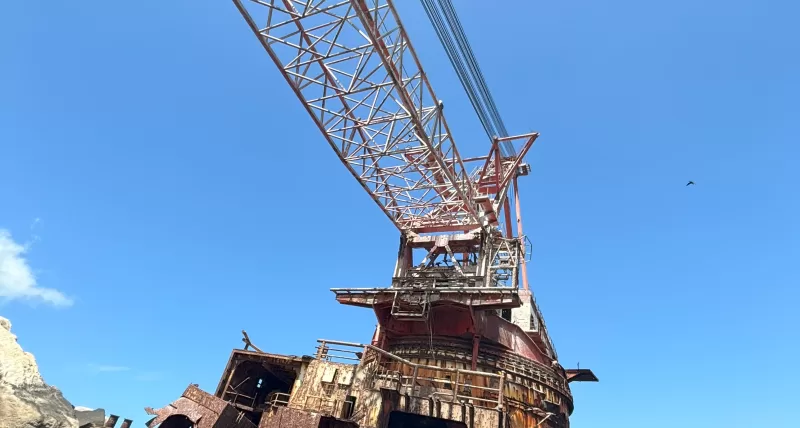Diving with Majestic Short-Tail Stingrays in Cape Town
Cape Town, South Africa, is a diver’s paradise, offering the opportunity to explore an array of mesmerizing marine life. Among the fascinating creatures that call these waters home are the Short-Tail Stingrays. In this blog post, we’ll go on an underwater journey to discover these magnificent rays, the best time to encounter them (October to January), and their unique characteristics. We’ll also introduce two exceptional shore dive sites, Millers Point and Long Beach in Simonstown, and mention two promising boat dive locations, Pete’s Pinnacles near Smitswinkel Bay and Finlay’s Point close to Castle Rocks. Additionally, we’ll explore the conservation status of these gentle giants and recommend the ideal camera setup: a GoPro with the 3Square Aquastick and Cube Lights.
Meet the Short-Tail Stingrays
Short-Tail Stingrays, scientifically known as Dasyatis brevicaudata, are incredible marine creatures that grace the coastal waters of Cape Town. These remarkable rays have cartilaginous skeletons, which means their skeletons are made of cartilage rather than bone. They have gill slits on the ventral (under) side of their bodies, and two spiracles behind their eyes on the dorsal (upper) surface. These adaptations allow them to efficiently draw in water, which then flows over their gills before exiting through the gill slits.
These bottom-dwelling rays employ various defensive strategies such as camouflage and toxic spines to protect themselves against predators. They are skilled at gliding along the sandy ocean floor in search of food, which primarily consists of mollusks, crustaceans, worms, and small fishes. Short-Tail Stingrays have electro-receptors and highly developed senses of smell and touch to locate and capture their prey.
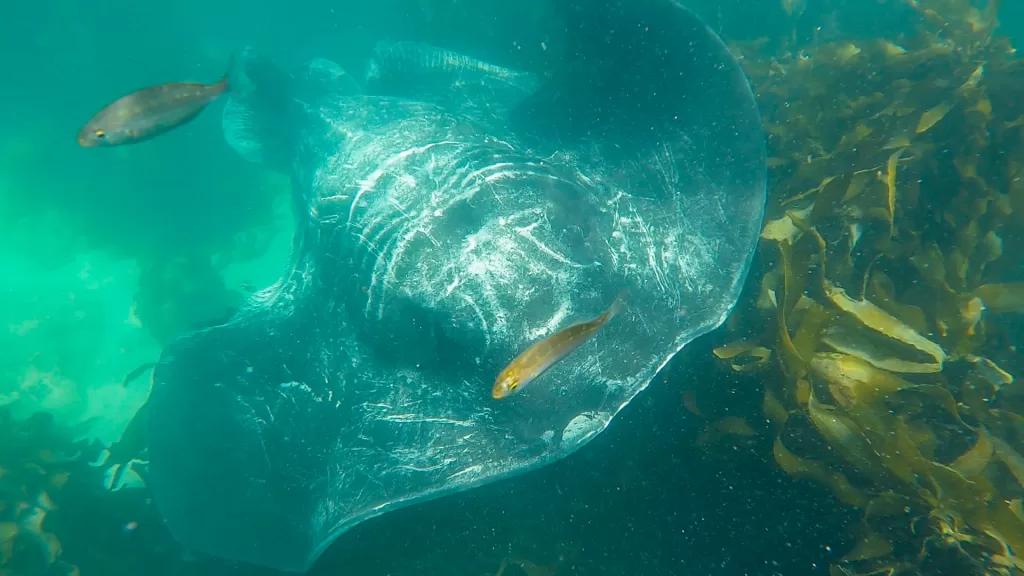
The Wonders of Short-Tail Stingrays
One of the most intriguing aspects of Short-Tail Stingrays is their reproductive strategy. These rays are ovoviviparous, meaning they give birth to live young. With a maximum width of 2.1 meters, a total length of at least 4.3 meters, and a weight exceeding 300 kilograms, Short-Tail Stingrays are possibly the largest of all stingray species.
Despite their intimidating appearance and the potential for their tail barb to inflict severe or even fatal wounds, Short-Tail Stingrays are generally more inquisitive than aggressive. Divers who approach them with respect and caution are often rewarded with breathtaking encounters.
Dive Sites for Stingray Enthusiasts
Millers Point: A Hidden Gem
Millers Point, situated on the western side of False Bay, is a shore dive site that promises unforgettable encounters with Short-Tail Stingrays. Its gentle slope and accessibility make it suitable for divers of all levels. As you descend into the often-murky waters, keep a watchful eye on the sandy seabed where these graceful rays often glide by. Millers Point is also a hub of marine life, ensuring that each dive is a treasure trove of discovery.
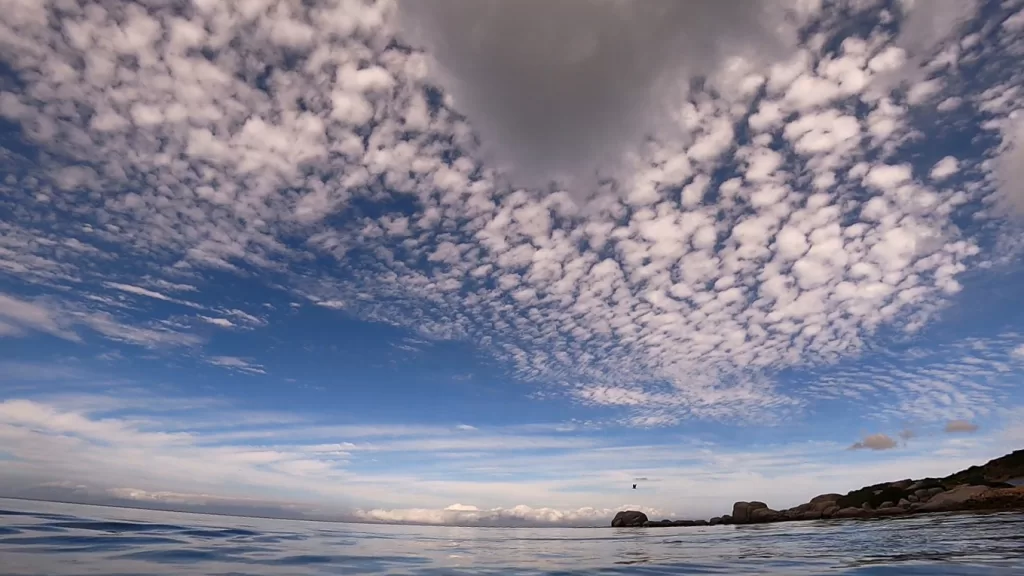
Long Beach, Simonstown: The Stingray Playground
Boat Dive Adventures
Pete's Pinnacles near Smitswinkel Bay
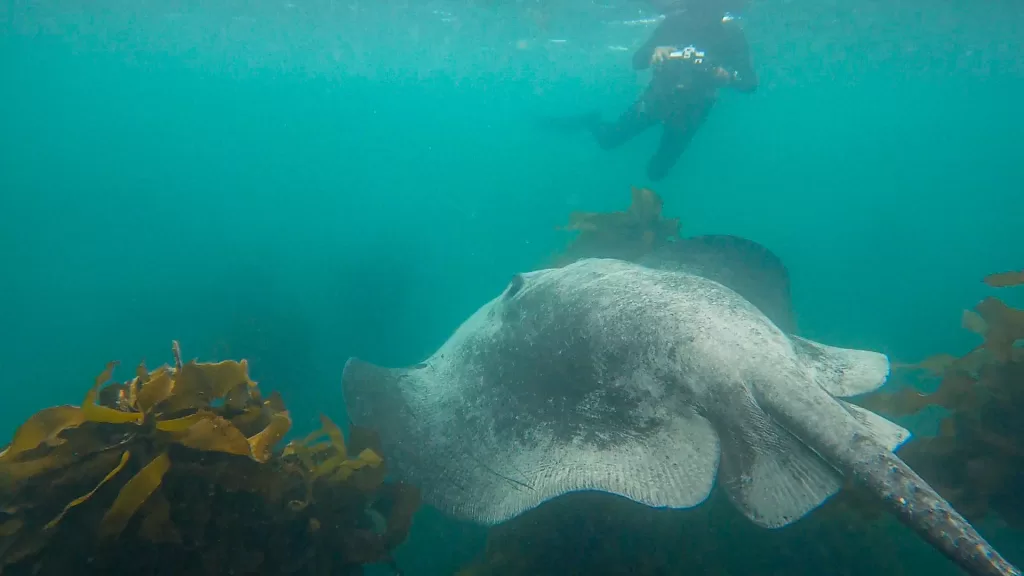
Finlay's Point near Castle Rocks
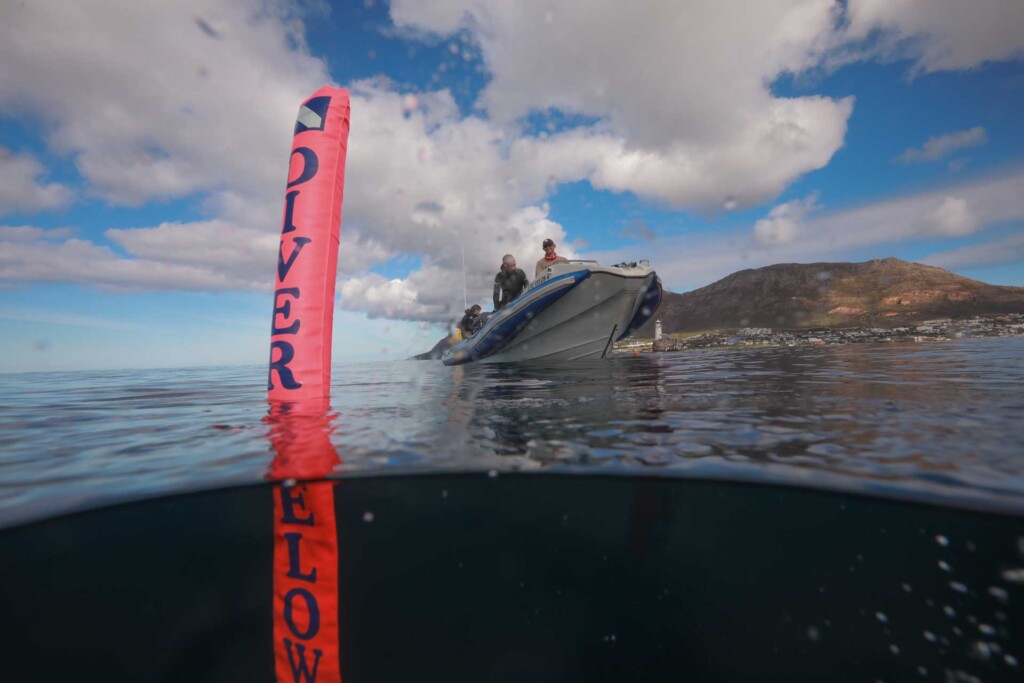
Challenging Visibility: 5 to 8 Meters
Conservation Efforts: Protecting Our Ocean Treasures
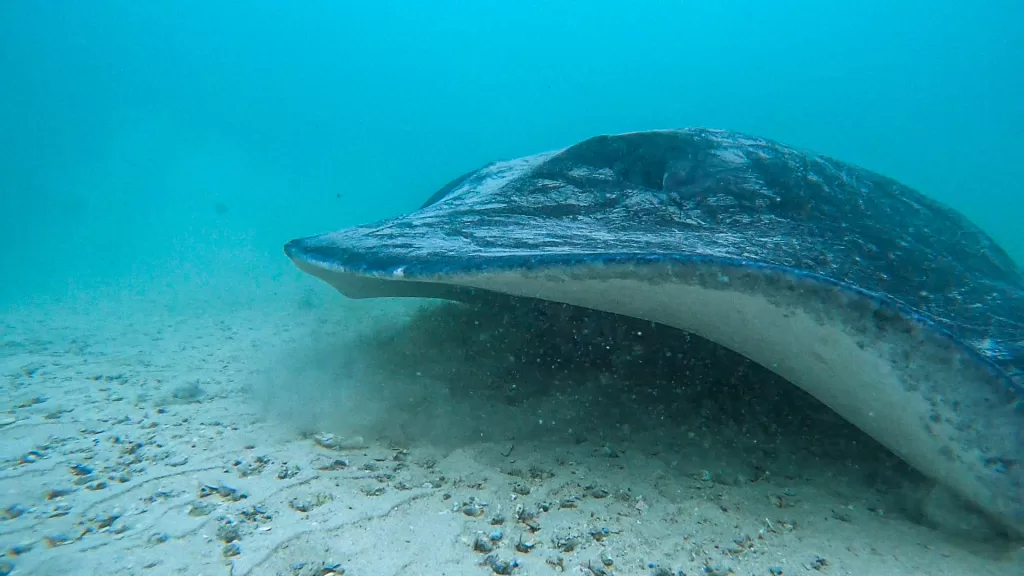
Ideal Camera Setup: GoPro with 3Square Aquastick and Cube Lights
For capturing the beauty of Short-Tail Stingrays and the underwater wonders of Cape Town, we recommend using a GoPro camera paired with a 3Square Aquastick and Cube Lights. This compact and versatile setup allows you to capture high-quality images and videos, even in challenging visibility conditions. Experiment with different angles and lighting to create stunning underwater footage of these graceful rays.
Diving with Short-Tail Stingrays in Cape Town is an adventure that combines the thrill of underwater exploration with the awe-inspiring beauty of these magnificent creatures. Whether you choose a shore dive at Millers Point or Long Beach or hop on a boat dive to Pete’s Pinnacles or Finlay’s Point, the opportunity to witness Short-Tail Stingrays in their natural environment is an experience that will leave a lasting impression and a deeper appreciation for the incredible marine life of South Africa’s coast. Remember to dive responsibly, protect the environment, and support conservation initiatives to ensure that future generations can also enjoy these magnificent underwater encounters.


